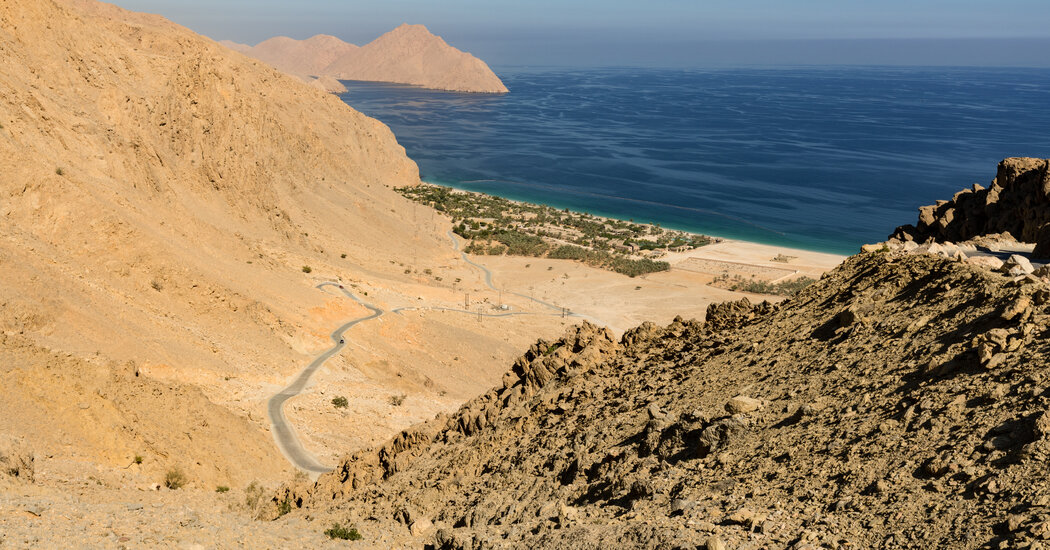High in the mountains of Oman and along its pounding shoreline, I stumbled onto an unexpected slice of heaven thanks to a friend’s recommendation. I even sprang for a few extra amenities for a mash-up of pauper meets paradise.
I first visited Oman in 2018 after regularly making one- or -two-day stopovers in Abu Dhabi, Dubai or Qatar to break up long flights between Europe and Asia. And although it is about a one-hour flight from those bustling and scorching cities, Oman can feel almost removed from time, whether you are in the Hajar Mountains that cut a swath across the country’s northern edge or dipping into the roiling waves of the Arabian Sea farther south.
I had read about the country’s wild and often empty coastline that stretches nearly 2,000 miles, but mountain hiking in the Gulf region was a new experience for me. What I discovered was a cinematic, “Dune”-like landscape of deserts, mountains and rugged canyons punctuated by centuries-old terrace farming. The scenery then plunged into the vast wasteland of the Rub’ al-Khali desert (“the empty quarter” in Arabic) and rivaled anything I’d ever seen.
Bordered by Yemen, Saudi Arabia and the United Arab Emirates, this country of nearly 4.7 million was transformed over the decades by Sultan Qaboos bin Said, who died in 2020. He had ousted his father in a bloodless coup, backed by the British, to embrace modernism — and scads of oil and natural gas deposits — in 1970.
The country has a fascinating maritime history — the Omani empire once stretched as far south as Zanzibar in the late 17th century — and a relaxed and accepting vibe rooted in Ibadism, which is often seen as a more moderate branch of Islam.
It has seemingly maintained political neutrality for decades, despite being situated in an at-times-volatile region. The northeastern tip of Oman is about 1,500 miles from Sana, the capital of Yemen. Salalah, nearer to Yemen in the south, is about 900 miles from the mouth of the Red Sea, a body of water in which attacks on cargo ships have been reported. (The U.S. State Department currently advises “increased caution” for travelers and Britain says “travel advice for Oman could change at short notice.”)
And old-world charm lingers across Oman, especially high on Jabal Akhdar (loosely translated as “green mountain” in Arabic), one of the highest peaks in the Hajar range, 70 miles southwest of the capital, Muscat. Although these mostly limestone mountains are typically…
Click Here to Read the Full Original Article at NYT > Travel…
